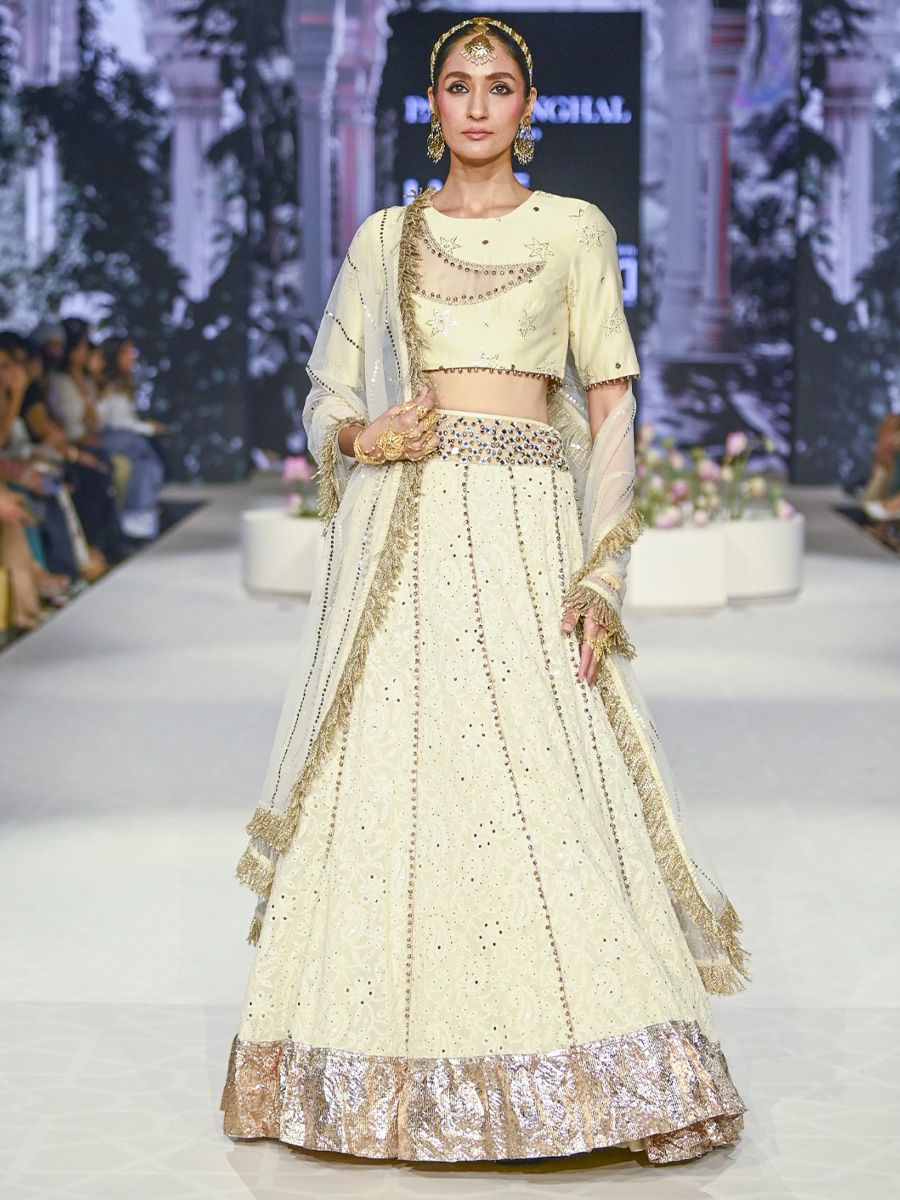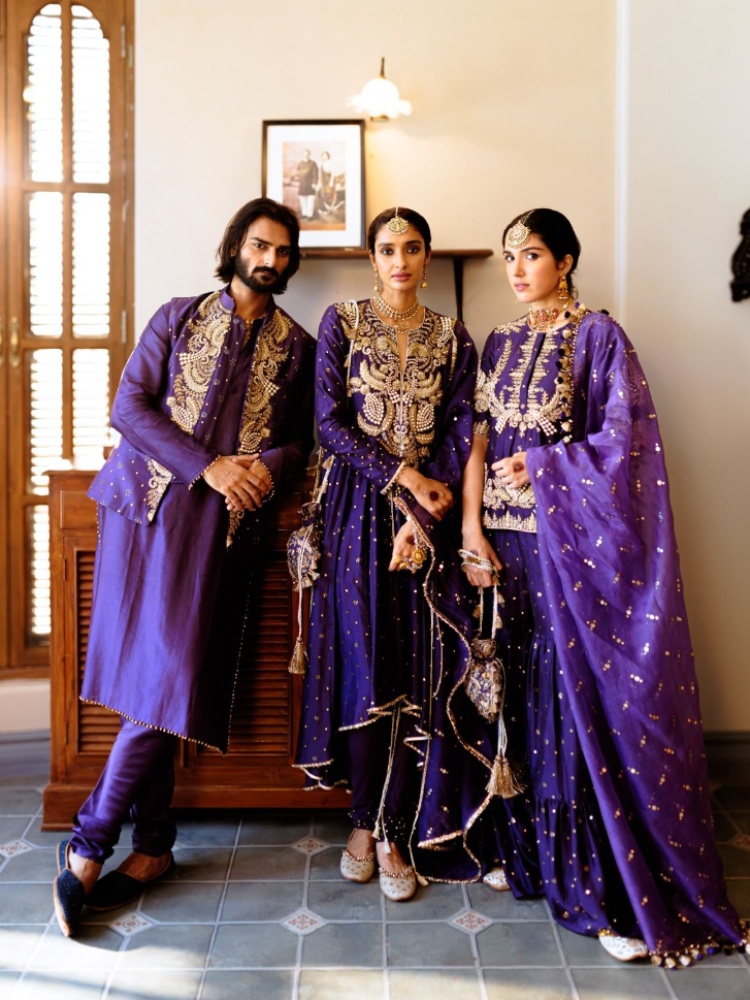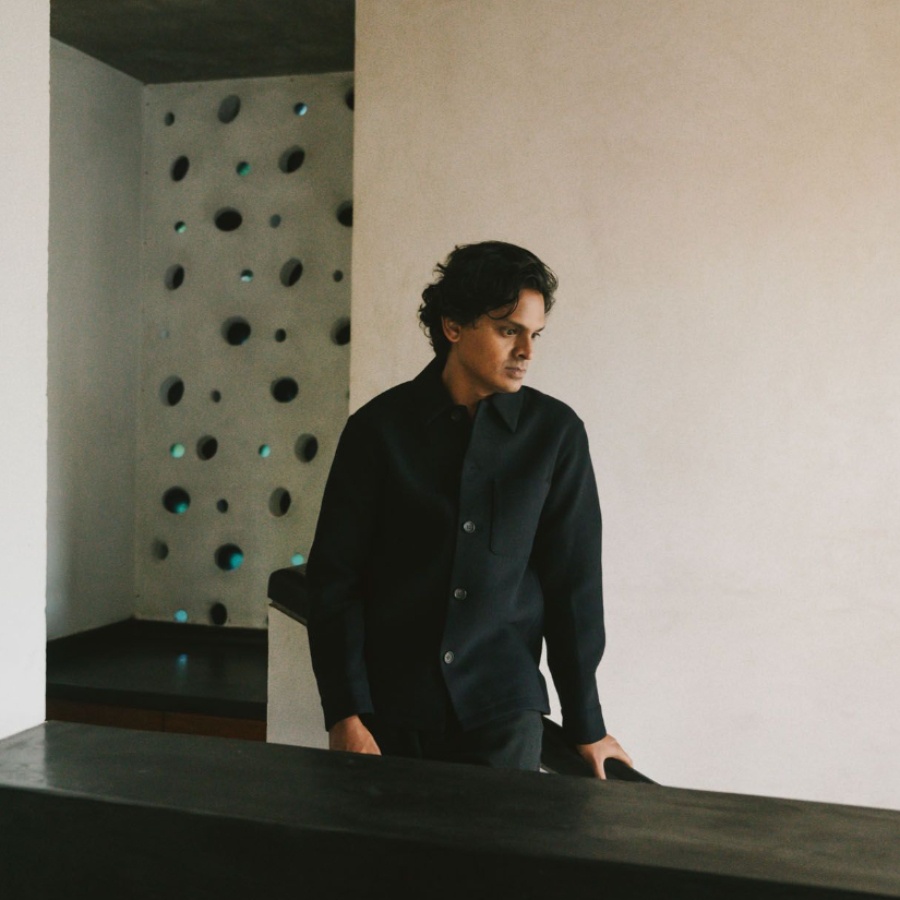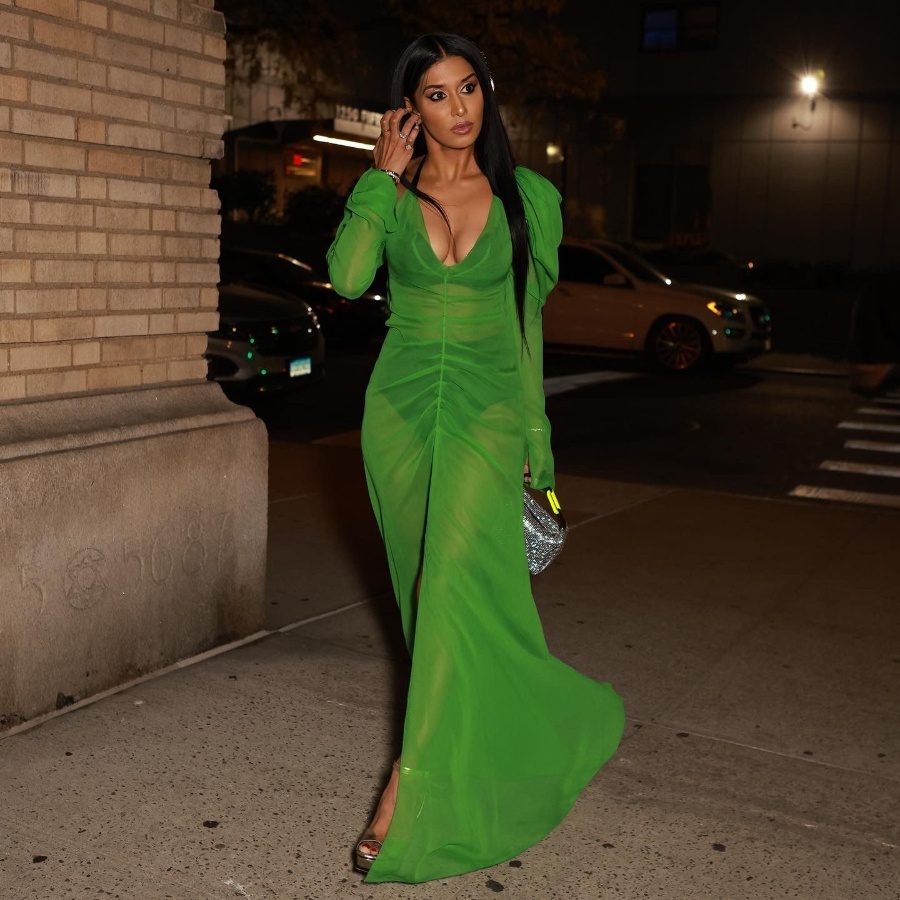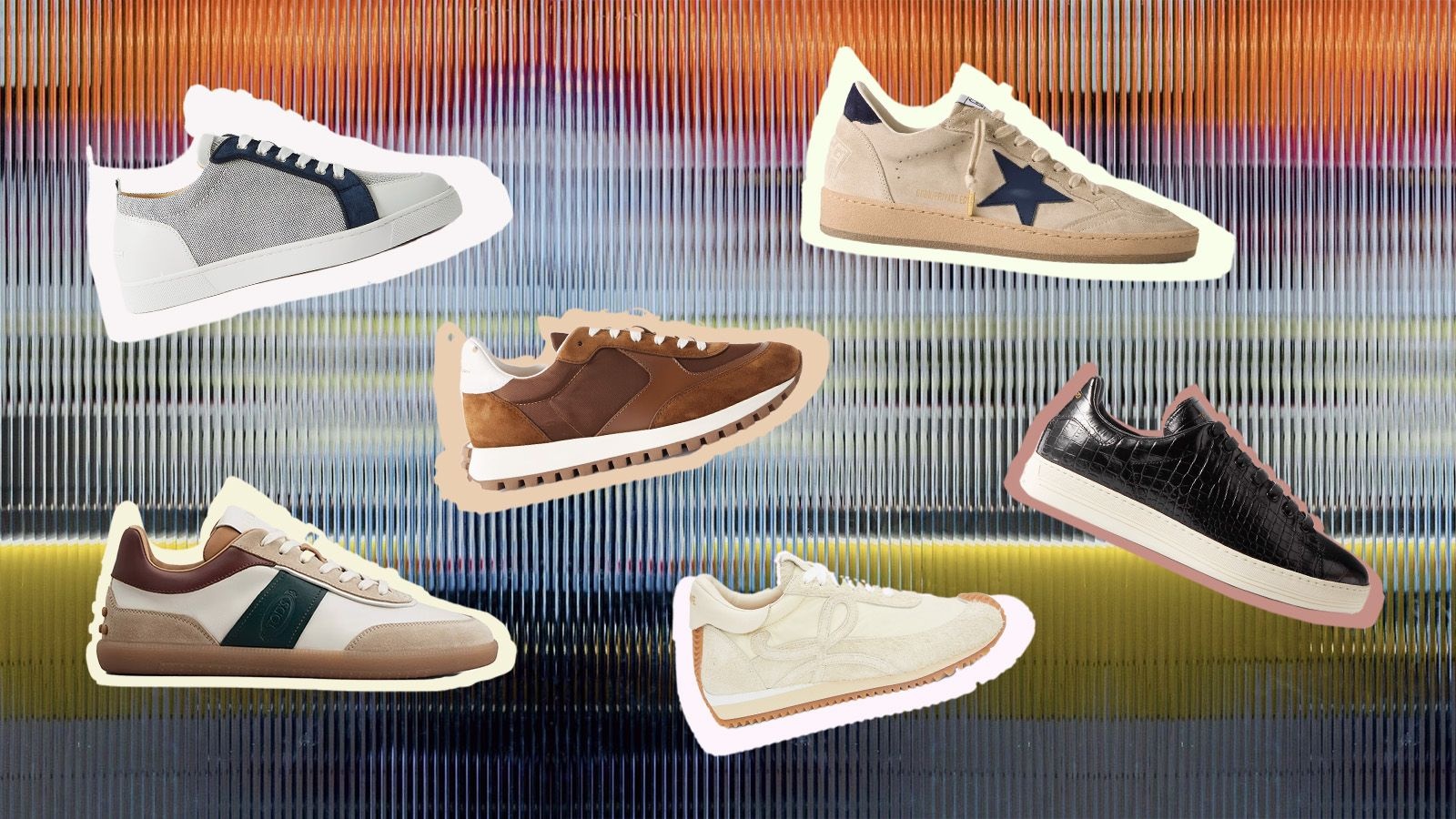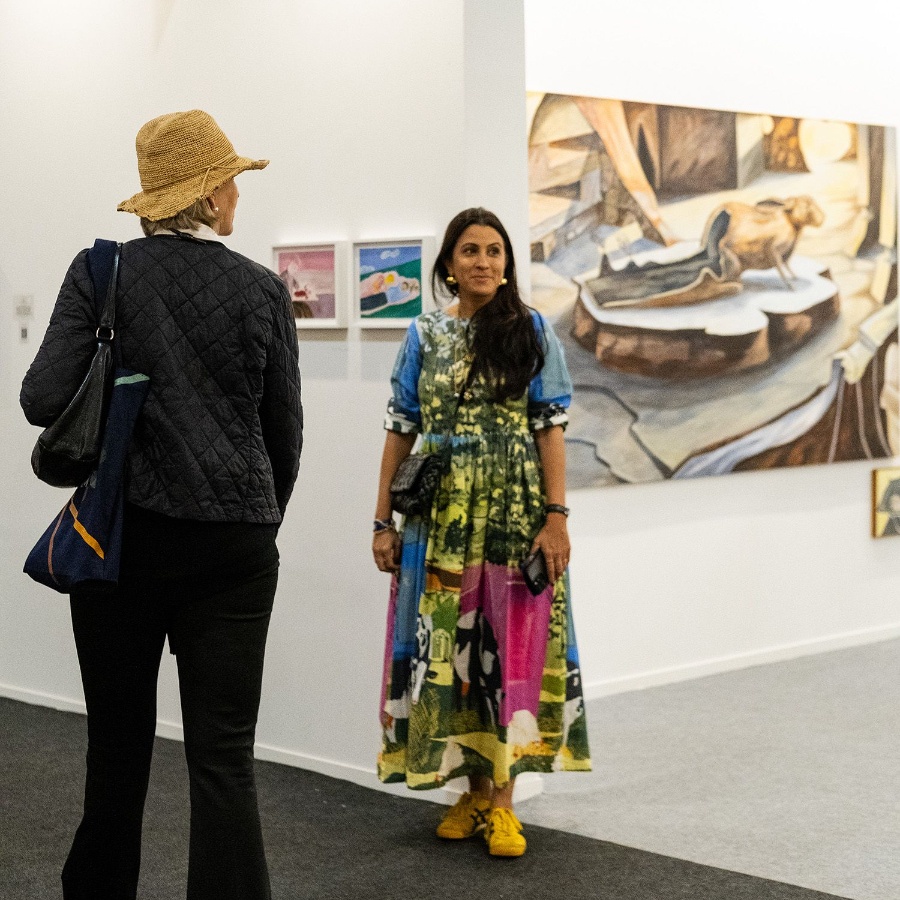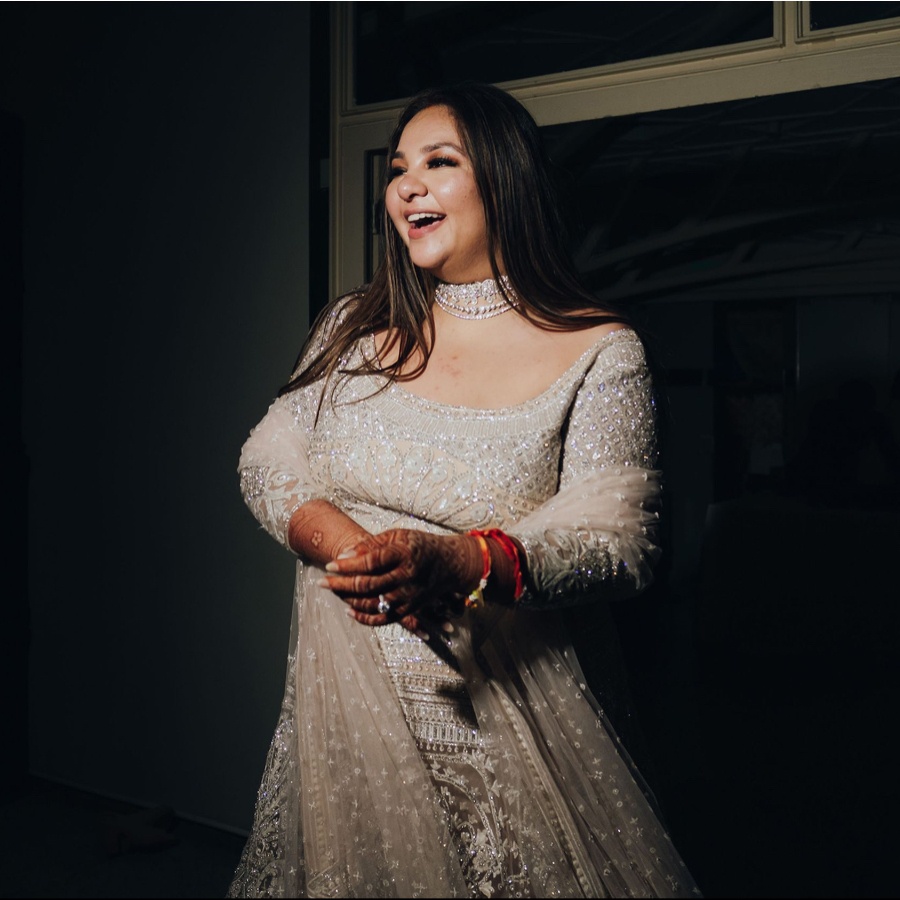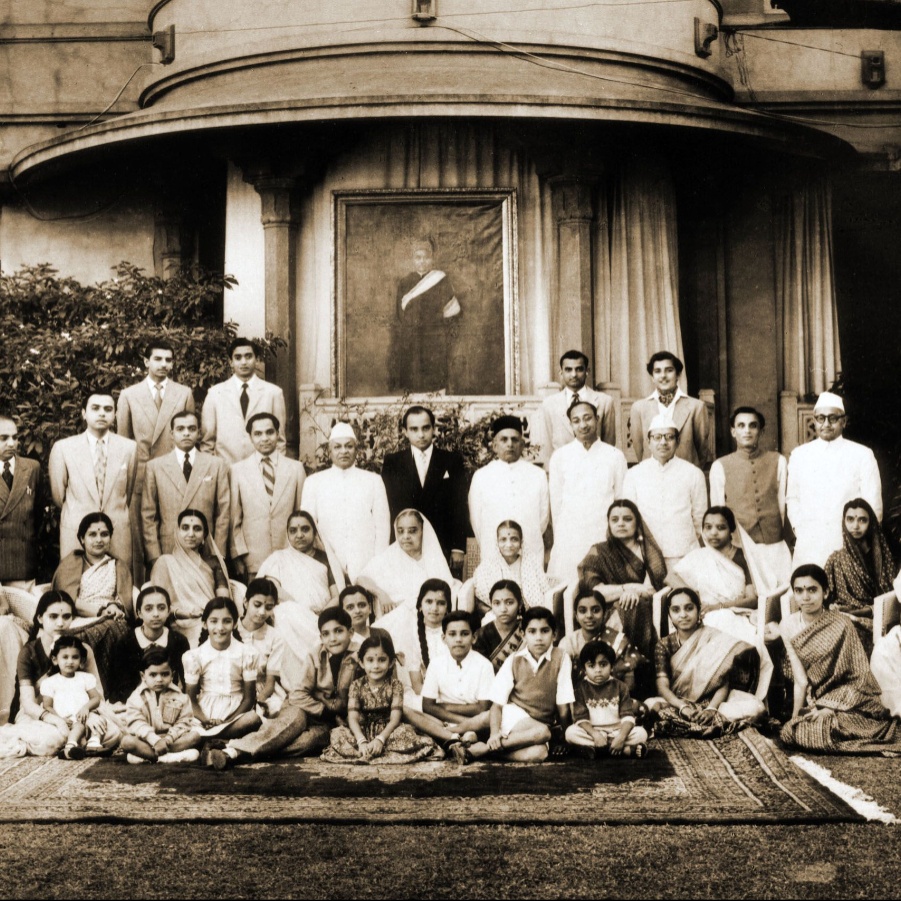If Payal Singhal’s career was a play, it would be a one-woman performance divided into three acts. Act One would begin in 1992 when Singhal, then only 15 years old, in a family that was immersed in the arts, would win a design contest that would kickstart her interest in fashion. Act Two would take place in New York, featuring a gang of entrepreneurial South Asian girls like her, all ready to make their mark in Manhattan. And Act Three, which is where she still is, would see her return to Mumbai, back to her roots, building her label in preparation for the acts that are to follow.
At 47, Singhal is still the star of her show—only now it’s a much bigger production. There are multiple lines of clothing—menswear, accessories, kidswear, and of course, her entire range of womenswear, from track suits to lehengas—all with her signature bohemian aesthetic. Like the silver eyebrow piercing that is the only visible hint of her slightly rebellious streak, Singhal’s clothes are pretty, delicate, with just an undercurrent of sharpness—an anarkali that could also be a strapless dress, a Patiala salwar paired with a crop top and blazer rather than a kurta, a densely embroidered choli that’s held in place with just a few strings. This year, she celebrates 25 years of her eponymous label, and to commemorate, we asked her to look back at five of her most memorable moments on and off the runway.
Winning the Shoppers Stop design contest, 1992
“This look was something I submitted for a design contest held by Shoppers Stop. My father saw the announcement in the newspaper and told me to take part in it. I was 15 at the time and used to keep sketching at home, so he realised that it was something that I was good at. My family has always been into the arts: my grandfather, JP Singhal, was a well-known painter, and my father already had a garment manufacturing business and one of India’s earliest retail chain stores—it was called London Fashions. I think my father would have liked to have his own label, but he needed to start a business. So he became a manufacturer instead. He was very keen that I become a designer. It was his foresight that shaped my career; he was a true mentor.
After submitting the sketch, the next round was to create the actual garment and produce a costing. If it won, Shoppers Stop would sell the piece in their stores. I ended up tying for first place together with [designer] Payal Khandwala and in the end, this design that I created when I was 15 ended up on their shelves.”
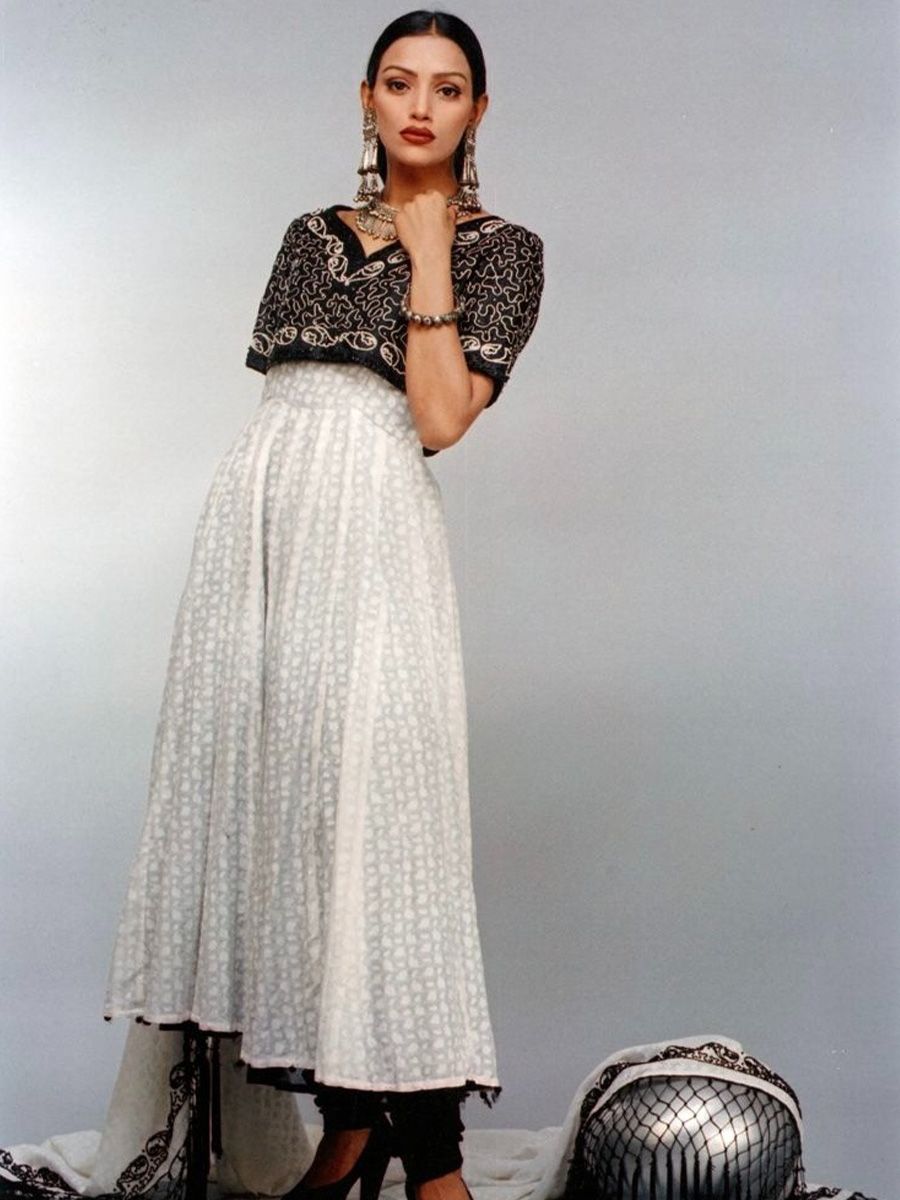
Her SNDT Women’s University graduation collection, 1997
“My graduation collection was a six-piece black bridalwear line called the Satanic Verses. The idea was that the bride was marrying the devil. What you’re seeing is a clip-on lehenga worn over a lycra bodysuit and skintight pants. It was very inspired by Olivia Newton John’s final look, her Pink Lady avatar, in the movie Grease. The idea was to deconstruct Indian wear, make it more modern—just clip off your lehenga and party the night away! I always like having that kind of drama on the runway. The dupatta attached was made of katwara fabric, a type of cutwork, which not a lot of people were working with at the time.
So many successful women designers are from SNDT—I’m thinking of Masaba, Payal Khandwala, Priyadarshini Rao. It’s a reflection of the kind of intense training we received; those two and half years were a great foundation for our careers, especially in terms of the discipline they imparted. But I’ll be honest: sometimes it felt like I was a single, one-woman army. None of the visiting faculty were very encouraging. I was a naughty student—I’m not going to take away that part of the narrative—but it was very frustrating. Despite that, I put in the work and soon after I graduated, I did a summer course at Parsons [School of Design, New York] where I got the chance to truly understand what studying fashion meant.”
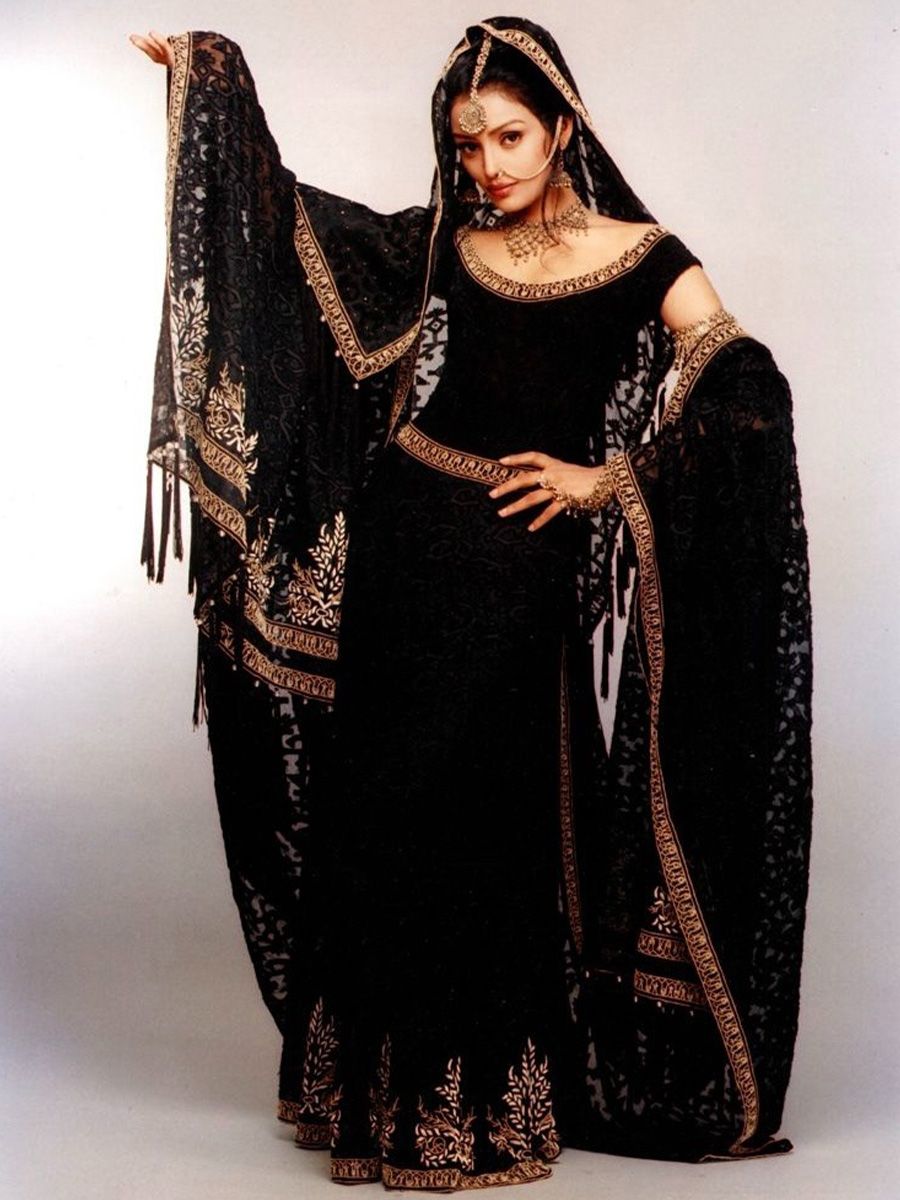
A fashion show in New York, 2005
“In 2004, I moved to New York with the dream of starting my own Western wear line. Until then I had been in Mumbai, working as a stylist for films and at MTV. I realised I couldn’t stand waiting around on sets, so styling was definitely not for me. Instead, I started my own label in 1999 with my father’s guidance. But when I reached New York, I realised there was such a huge demand for Indo-western clothing from the South Asian market. At that point there were no Indian designers in the States; the Indians there were still wearing salwar kameez and thinking that’s what people in India wore, so I had to educate them. I opened a store at Gramercy Park and this image is from a fashion show I did in the Meat Packing District, at a nightclub called Earth. There were 5,000 people who attended it and the looks all featured some element of Indian crafts, but the silhouettes were very Indo-western.
I did so many fun things in New York—I auditioned for Project Runway, went for evening classes at FIT, styled the hosts of the Asian Variety Show. It’s where I met some of my closest friends and mentors, we were like the OG Sex & The City crew, we walked those pavements, so the brown girls and boys of today could run on them. When I came back to India, my first show at Lakmé Fashion Week in 2007 was called New York New York and it was inspired by the city’s street style.”

Her first bridal collection, 2016
“The label has always been about a more contemporary approach to bridalwear and in 2015, we cemented that by participating in the Vogue Wedding Show. It became clear to me that we would be the ones you come to for the mehendi or the haldi. The only category I don’t feel comfortable designing for is the main ceremony and the cocktail; there are so many brilliant stalwarts who already do that so well. I’ve done the most amazing weddings, though—lesbian weddings, African weddings, Jewish and Indian weddings. My first attempt at bridalwear was my own sangeet look when I got married in 2003. I get mortified when I look at it today, but I did put it as a sample in my New York store and the design actually sold out.”
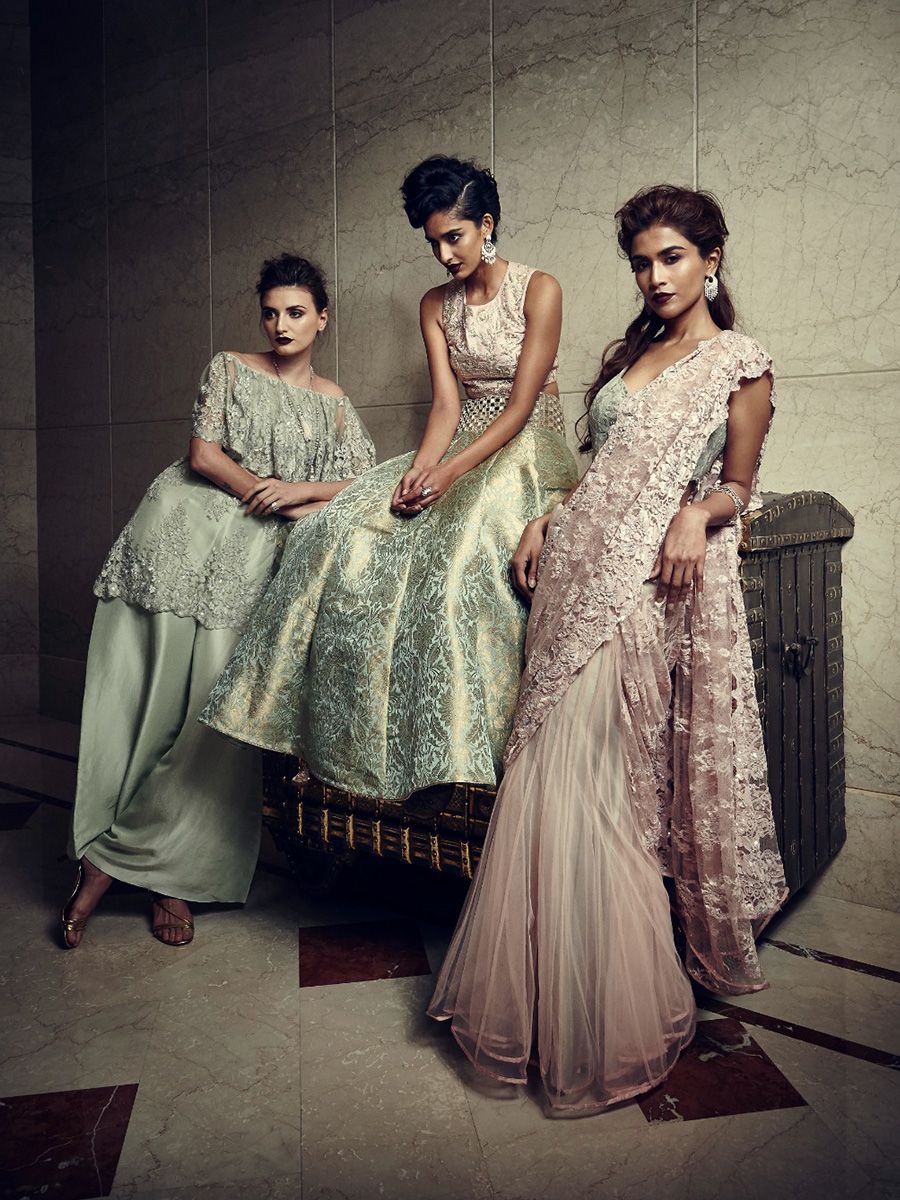
The Tazhib collection, 2024
“To celebrate 25 years of the brand, we referenced a lot of things that have moved me over the years. I opened the show with a look made of katwara fabric in homage to that my SNDT graduation collection. Each outfit was edged with ghungroos, because ‘payal’ of course means ghungroo, and I wanted to ‘ring a bell’ to the fact that we were celebrating 25 years. I’ve always been inspired by Mughal art and architecture—the floral motifs, the arches, the jewellery—so there are a lot of those references. The show started with Shriya Saran doing a kathak dance to a traditional sargam, where you sing the musical notes. It ended with a performance by singer Vidya Vox, to show our modernity.”
